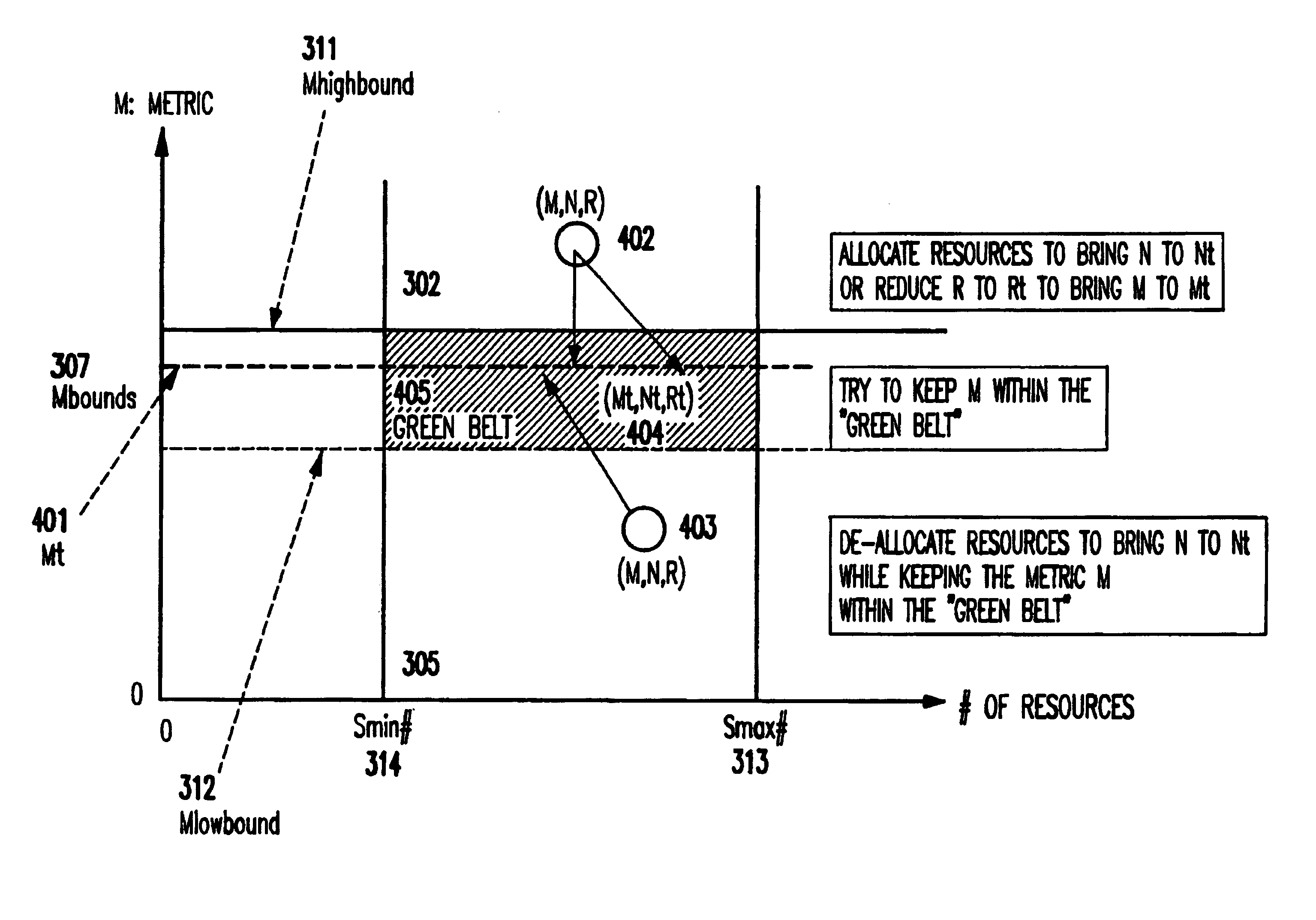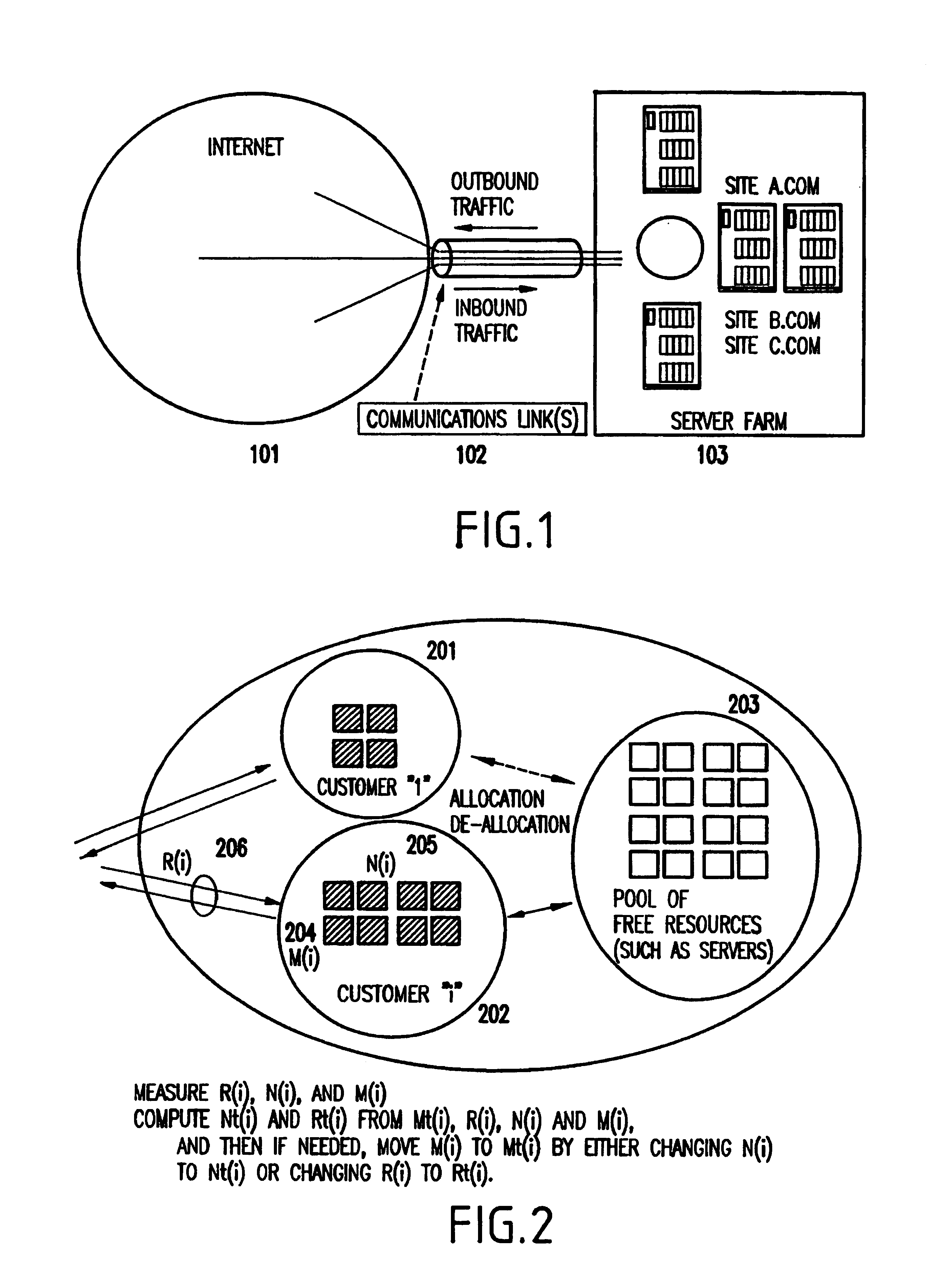Method and apparatus for dynamically adjusting resources assigned to plurality of customers, for meeting service level agreements (SLAS) with minimal resources, and allowing common pools of resources to be used across plural customers on a demand basis
- Summary
- Abstract
- Description
- Claims
- Application Information
AI Technical Summary
Benefits of technology
Problems solved by technology
Method used
Image
Examples
embodiment
PREFERRED EMBODIMENT
[0040]Referring to FIG. 2, prior to describing the details of the invention, an overview and a primary object of the present invention will be described below.
[0041]As shown in FIG. 2, the invention first monitors the inbound traffic rate R(i) 206, the currently assigned amount of server resources N(i) 205, and the current service level metric M(i) 204 for all customers 201 and 202.
[0042]Then, the inventive system performs the following actions only when M(i) falls outside of Mbounds(i), namely either M(i) is above Mhighbound(i) or M(i) is below Mlowbound(i), to avoid “allocation / de-allocation swings”.
[0043]The “target” amount of server resources Nt(i), without changing the inbound traffic R(i), is computed. Further, the “target” inbound traffic rate Rt(i), without changing the allocated resource N(i), is computed in order to bring the service level metric M(i) close to the “targeted” service level metric Mt(i) from monitored R(i), N(i) and M(i) for all i. The ta...
PUM
 Login to View More
Login to View More Abstract
Description
Claims
Application Information
 Login to View More
Login to View More - R&D
- Intellectual Property
- Life Sciences
- Materials
- Tech Scout
- Unparalleled Data Quality
- Higher Quality Content
- 60% Fewer Hallucinations
Browse by: Latest US Patents, China's latest patents, Technical Efficacy Thesaurus, Application Domain, Technology Topic, Popular Technical Reports.
© 2025 PatSnap. All rights reserved.Legal|Privacy policy|Modern Slavery Act Transparency Statement|Sitemap|About US| Contact US: help@patsnap.com



